Microorganisms
Microorganisms, also known as microbes, are tiny living organisms that are too small to be seen with the naked eye. They include bacteria, viruses, fungi, and protists. Despite their small size, microorganisms play a crucial role in the environment, medicine, industry, and food production.
Types of Microorganisms
There are several main types of microorganisms:
- Bacteria: Single-celled organisms that can be found in various environments, from soil to human intestines. Some bacteria are beneficial, while others can cause illness.
- Viruses: Tiny infectious agents that can only replicate inside the cells of other organisms. They cause a wide range of diseases, from the common cold to more serious illnesses.
- Fungi: Include molds, yeast, and mushrooms. They can be both helpful, such as in the production of antibiotics, or harmful, causing infections like athlete's foot and ringworm.
- Protists: A diverse group of eukaryotic microorganisms, including algae and protozoa. Some protists are capable of causing diseases such as malaria.
Role of Microorganisms
Microorganisms have a significant impact on our lives:
- Environmental Recycling: Microorganisms play a vital role in the decomposition of organic matter, nutrient cycling, and soil formation.
- Medicine: They are used to produce antibiotics, vaccines, and other medicines. They also aid in the digestion process in the human digestive system.
- Food Production: Microorganisms are used in the fermentation process to make bread, yogurt, cheese, and other food products.
- Biotechnology: They are used in the production of biofuels, enzymes, and various chemicals.
Study Guide
Here are some key points to remember when studying microorganisms:
- What are the main types of microorganisms?
- What are the roles of microorganisms in the environment, medicine, and food production?
- Give examples of beneficial and harmful microorganisms.
- How do microorganisms contribute to the recycling of nutrients in the environment?
- How are microorganisms used in the production of food and medicine?
Understanding microorganisms is important as they have a profound impact on our daily lives and the world around us.
.◂Science Worksheets and Study Guides Second Grade. The sun and earth
Study Guide The sun and earth
The sun and earth  Activity Lesson
Activity Lesson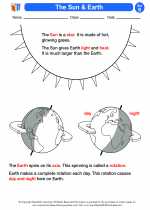 The Sun & Earth
The Sun & Earth  Worksheet/Answer key
Worksheet/Answer key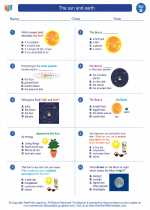 The sun and earth
The sun and earth  Worksheet/Answer key
Worksheet/Answer key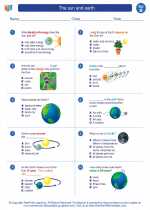 The sun and earth
The sun and earth  Worksheet/Answer key
Worksheet/Answer key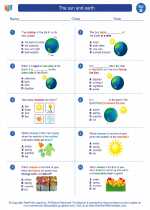 The sun and earth
The sun and earth  Worksheet/Answer key
Worksheet/Answer key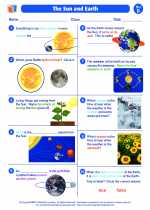 The Sun and Earth
The Sun and Earth  Vocabulary/Answer key
Vocabulary/Answer key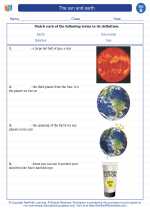 The sun and earth
The sun and earth 

 Activity Lesson
Activity Lesson
 Worksheet/Answer key
Worksheet/Answer key
 Worksheet/Answer key
Worksheet/Answer key
 Worksheet/Answer key
Worksheet/Answer key
 Worksheet/Answer key
Worksheet/Answer key
 Vocabulary/Answer key
Vocabulary/Answer key

The resources above cover the following skills:
Concepts of Earth Science: A student should understand and be able to apply the concepts, processes, theories, models, evidence, and systems of earth and space sciences. A student who meets the content standard should:
Develop an understanding of the cyclical changes controlled by energy from the sun and by Earth's position and motion in our solar system.